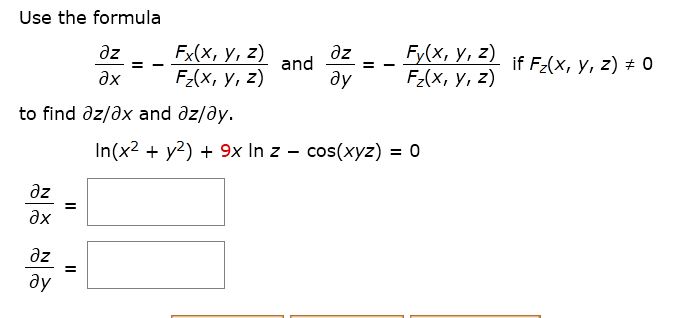

#DFIND DY AND DELTA Y HOW TO#
We now take a look at how to use differentials to approximate the change in the value of the function that results from a small change in the value of the input. In order to trace back to the Exact integrating factor, multiply the equation with a ‘special integrating factor’ known as OR (depending upon the problem statement).\( \newcommand\): The differential \(dy=f'(a)\,dx\) is used to approximate the actual change in \(y\) if \(x\) increases from \(a\) to \(a+dx\). If we can trace back and make the equation exact again, the problem will be easily solved. So far we have learned everything about Exact differential equations and how to solve them but there are times we come across certain equations which are “almost exact” but not exact differential equations since they are not Exact but are formed from exact differential equations by doing some changes in them. Multiply Integrating factor on both sides, Question 3: The general solution of the differential equation will be?

Multiply by Integrating factor on both sides: Question 2: Find general solution of differential equation, This is the general solution of the given differential equation. Putting this value in the original equation, Integrating both sides of the equation by I.F, we get Multiplying both sides of the equation by I.F. The equation matches the form given above, so here P = -1 and Q = cosx. Question 1: Find the general solution of the following equation, Then and the solution of the differential equation is given by Sample Problems Note: In case, the first-order differential equation is in the form, where P 1 and Q 1 are constants or functions of y only. Step 3: Write the solution of the differential equation as Step 1: Write the given differential equation in the form, where P and Q are either constants or functions of x only. The following steps give an outline of how to solve the first-order linear equation of this form using integrating factor. P and Q are either constants or functions of x. The above equation represents a linear first-order differential equation. This is also yet another method for solving linear differential equations. I(x, y) = xe y + y 2 + C Integrating Factor Therefore, the solution for the exact equation obtained is, Hence, the given equation is exact equation. This is the general solution for the exact differential equation. Question 2: Solve the differential equation for the following: This is the general solution for this exact differential equation. Let’s plug in f(y) in the general solution, Notice that we are writing f(y) in place constant of integration “C”, because we had y as a fixed parameter while integrating it, but we know that is a variable, so we need to calculate f(y). Now let’s find the solution of this equation, Since both of these are same, the equation is exact. Here, M(x, y) = 3x 2y 3 – 5x 4 and N(x, y) = y + 3x 3y 2įirst check if this equation is exact or not, The general solution can be calculated in either of the following ways: So, now that we have checked that the equation is exact, we will move on to finding the solution to this equation.Ĭalculating the solution of Exact Differential Equations: So to check if the equation is exact or not, simply calculate these partial derivatives. Let’s assume there is a solution function I(x, y). Solving these equations means finding that function I(x, y) = C. It has a special function I(x, y) whose partial derivatives can be put in place of M and N like, It is a first-order differential equation that looks like, These equations are first-order differential equations. We are going to look at the exact differential equations. Note that the order can be arbitrarily large. The coefficients are allowed to depend only on the independent variables. Properties of Matrix Addition and Scalar Multiplication | Class 12 Maths Compute (Delta y m Delta t ) and find (y1 ) using (y1 approx y(t1) y0 + Delta y ) Use ((t1,y1) ) as the initial point to find ((t2,y2) ) using the above steps Repeat process for as many points as desired.Torque on an Electric Dipole in Uniform Electric Field.p-n Junction Diode- Definition, Formation, Characteristics, Applications.Class 12 NCERT Solutions - Mathematics Part I - Chapter 2 Inverse Trigonometric Functions - Exercise 2.1.Graphical Solution of Linear Programming Problems.Shortest Distance Between Two Lines in 3D Space | Class 12 Maths.Difference between write() and writelines() function in Python.Data Communication - Definition, Components, Types, Channels.How to Connect Python with SQL Database?.ISRO CS Syllabus for Scientist/Engineer Exam.ISRO CS Original Papers and Official Keys.GATE CS Original Papers and Official Keys.


 0 kommentar(er)
0 kommentar(er)
